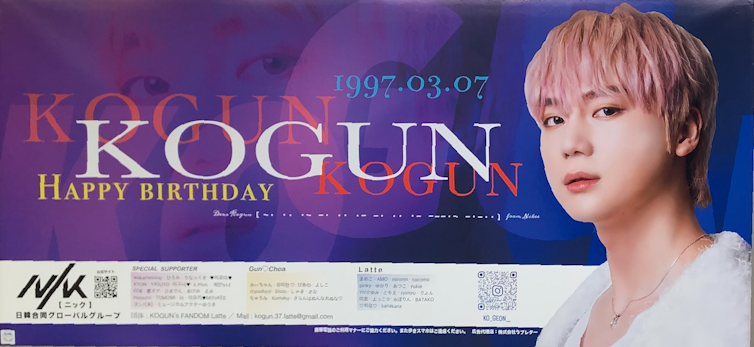Posters in Tokyo’s enormous Shinjuku railway station are normally used for advertising commodities like cosmetics and food, as well as new films. But occasionally you may happen across a poster with a birthday message and a picture of a young man, often from a boy band and typically with impeccable looks.
These posters are created by specialised advertising companies and are paid for by adoring fans. They are part of a phenomenon called oshikatsu, a term coined in recent years that is made from the Japanese words for “push” and “activity”.
Oshikatsu refers to the efforts fans engage in to support their favourite oshi, which can mean an entertainer, an anime or manga character, or a group they admire and want to “push”.
A considerable part of this support is economic in nature. Fans attend events and concerts, or buy merchandise such as CDs, posters and other collectables. Other forms of oshikatsu are meant to spread the fame of their idol by sharing content about their oshi, engaging in social media campaigns, and writing fan fiction or drawing fan art.
Oshikatsu developed out of the desire of fans to have a closer link to their idols. The combination of oshi and katsu first appeared on social media networks in 2016 and became widespread as a hashtag on Twitter in 2018. In 2021, oshikatsu was nominated as a candidate for Japan’s word of the year, a sign that its use had become mainstream.
Now, it has appeared on the radar of corporate Japan. The reason for this is a burst of inflation in recent years, caused by pandemic supply chain disruption and geopolitical shocks, that has caused Japanese consumers to reduce their spending.
-
admin2025.04.28 20:15

Contrary to popular perception, oshikatsu is no longer the purview solely of subcultures or young people. It has made inroads with older age groups in Japan as well.